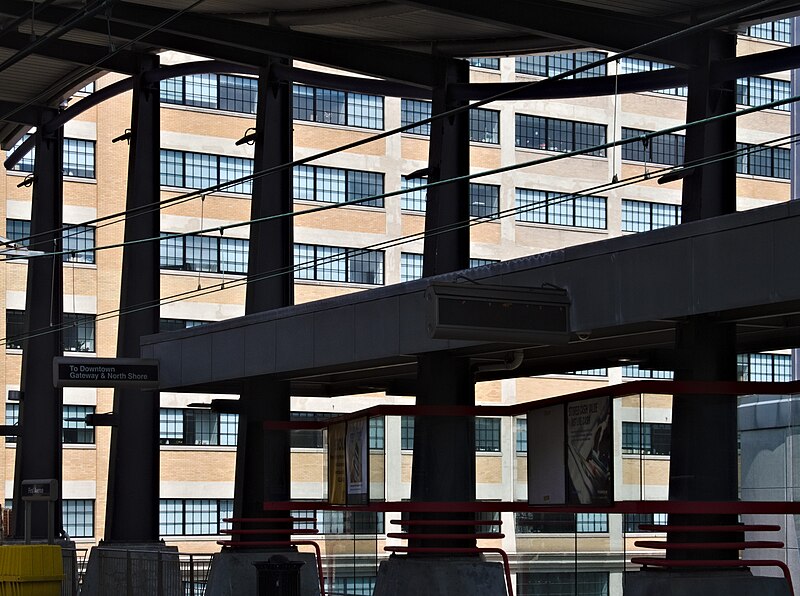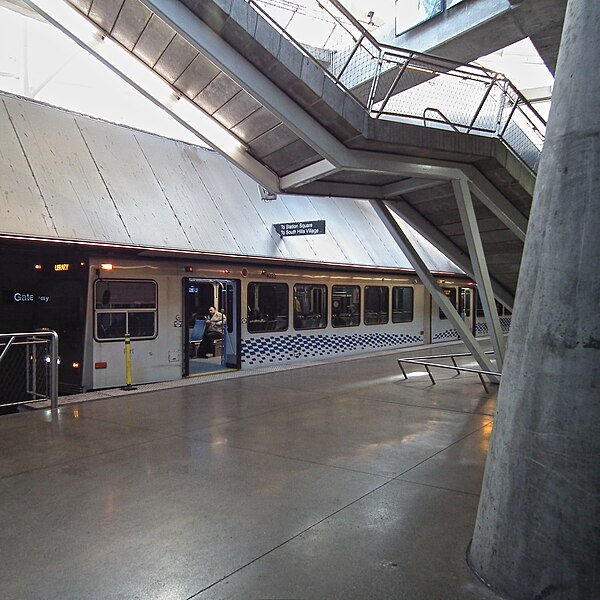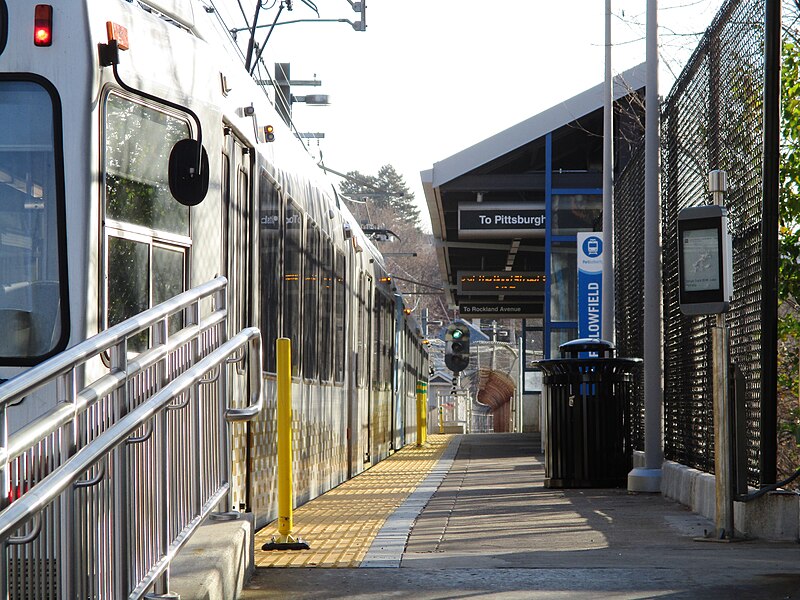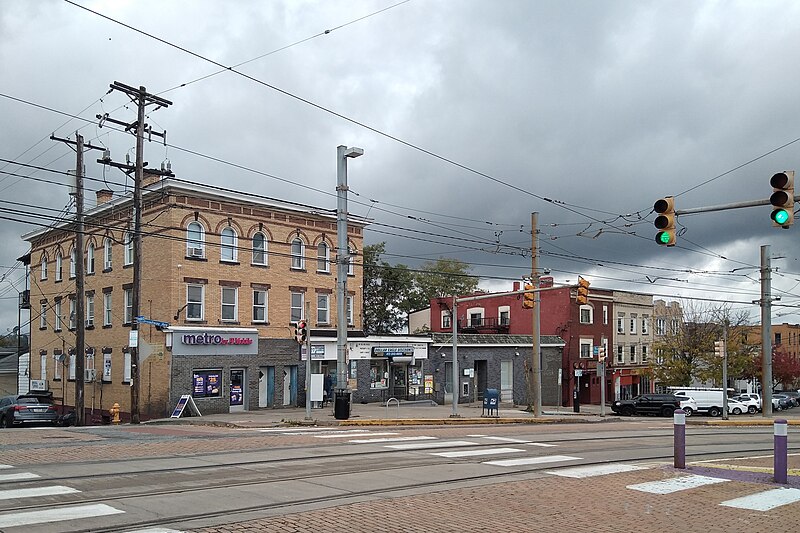
In the terminology of Pittsburgh Regional Transit, Stevenson is a “stop” rather than a “station,” meaning that you board from the low-level door—the one old Pa Pitt calls the “Pittsburgh door”—and walk up three steps, whereas at a “station” you enter by one of the platform-level doors.


















